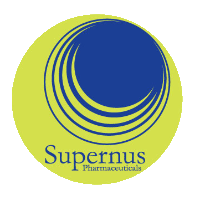
Supernus Pharmaceuticals Inc
NASDAQ:SUPN


| US |

|
Johnson & Johnson
NYSE:JNJ
|
Pharmaceuticals
|
| US |

|
Berkshire Hathaway Inc
NYSE:BRK.A
|
Financial Services
|
| US |

|
Bank of America Corp
NYSE:BAC
|
Banking
|
| US |

|
Mastercard Inc
NYSE:MA
|
Technology
|
| US |

|
UnitedHealth Group Inc
NYSE:UNH
|
Health Care
|
| US |

|
Exxon Mobil Corp
NYSE:XOM
|
Energy
|
| US |

|
Pfizer Inc
NYSE:PFE
|
Pharmaceuticals
|
| US |

|
Palantir Technologies Inc
NYSE:PLTR
|
Technology
|
| US |

|
Nike Inc
NYSE:NKE
|
Textiles, Apparel & Luxury Goods
|
| US |

|
Visa Inc
NYSE:V
|
Technology
|
| CN |

|
Alibaba Group Holding Ltd
NYSE:BABA
|
Retail
|
| US |

|
3M Co
NYSE:MMM
|
Industrial Conglomerates
|
| US |

|
JPMorgan Chase & Co
NYSE:JPM
|
Banking
|
| US |

|
Coca-Cola Co
NYSE:KO
|
Beverages
|
| US |

|
Walmart Inc
NYSE:WMT
|
Retail
|
| US |

|
Verizon Communications Inc
NYSE:VZ
|
Telecommunication
|
Utilize notes to systematically review your investment decisions. By reflecting on past outcomes, you can discern effective strategies and identify those that underperformed. This continuous feedback loop enables you to adapt and refine your approach, optimizing for future success.
Each note serves as a learning point, offering insights into your decision-making processes. Over time, you'll accumulate a personalized database of knowledge, enhancing your ability to make informed decisions quickly and effectively.
With a comprehensive record of your investment history at your fingertips, you can compare current opportunities against past experiences. This not only bolsters your confidence but also ensures that each decision is grounded in a well-documented rationale.
Do you really want to delete this note?
This action cannot be undone.

| 52 Week Range |
25.77
37.83
|
| Price Target |
|
We'll email you a reminder when the closing price reaches USD.
Choose the stock you wish to monitor with a price alert.

|
Johnson & Johnson
NYSE:JNJ
|
US |

|
Berkshire Hathaway Inc
NYSE:BRK.A
|
US |

|
Bank of America Corp
NYSE:BAC
|
US |

|
Mastercard Inc
NYSE:MA
|
US |

|
UnitedHealth Group Inc
NYSE:UNH
|
US |

|
Exxon Mobil Corp
NYSE:XOM
|
US |

|
Pfizer Inc
NYSE:PFE
|
US |

|
Palantir Technologies Inc
NYSE:PLTR
|
US |

|
Nike Inc
NYSE:NKE
|
US |

|
Visa Inc
NYSE:V
|
US |

|
Alibaba Group Holding Ltd
NYSE:BABA
|
CN |

|
3M Co
NYSE:MMM
|
US |

|
JPMorgan Chase & Co
NYSE:JPM
|
US |

|
Coca-Cola Co
NYSE:KO
|
US |

|
Walmart Inc
NYSE:WMT
|
US |

|
Verizon Communications Inc
NYSE:VZ
|
US |
This alert will be permanently deleted.
 Supernus Pharmaceuticals Inc
Supernus Pharmaceuticals Inc
Supernus Pharmaceuticals Inc
Investor Relations
Supernus Pharmaceuticals Inc. weaves a distinctive narrative within the realm of specialty pharmaceuticals, primarily zeroing in on the development and commercialization of products that address unmet medical needs in central nervous system (CNS) diseases. Founded in 2005 and headquartered in Rockville, Maryland, the company has become a nimble player in the pharmaceutical landscape, leveraging its expertise in product development to create a portfolio that caters to a range of CNS conditions, including epilepsy, migraine, attention-deficit/hyperactivity disorder (ADHD), and bipolar disorder. By focusing on these complex and often challenging areas, Supernus not only pushes the envelope of pharmaceutical innovation but also aligns its mission closely with improving quality of life for patients enduring these conditions.
Financially, Supernus drives its revenue through both its proprietary portfolio and strategic partnerships that expand its market reach. Central to its business model is the commercialization of FDA-approved medications such as Trokendi XR and Qelbree, which cater to specific patient needs within the CNS domain. The company's growth is augmented by an adept blend of internal research & development and acquisitions, enabling it to enhance its pipeline and expand its therapeutic offerings. Partnerships and collaborations with other pharmaceutical entities elevate its market penetration, while a solid sales and distribution network ensures its products efficiently reach healthcare providers and patients. This strategic approach allows Supernus to maintain a robust revenue stream while steadily investing in future drug development programs, fostering long-term growth and sustainability within the competitive pharmaceutical sector.

Supernus Pharmaceuticals Inc. weaves a distinctive narrative within the realm of specialty pharmaceuticals, primarily zeroing in on the development and commercialization of products that address unmet medical needs in central nervous system (CNS) diseases. Founded in 2005 and headquartered in Rockville, Maryland, the company has become a nimble player in the pharmaceutical landscape, leveraging its expertise in product development to create a portfolio that caters to a range of CNS conditions, including epilepsy, migraine, attention-deficit/hyperactivity disorder (ADHD), and bipolar disorder. By focusing on these complex and often challenging areas, Supernus not only pushes the envelope of pharmaceutical innovation but also aligns its mission closely with improving quality of life for patients enduring these conditions.
Financially, Supernus drives its revenue through both its proprietary portfolio and strategic partnerships that expand its market reach. Central to its business model is the commercialization of FDA-approved medications such as Trokendi XR and Qelbree, which cater to specific patient needs within the CNS domain. The company's growth is augmented by an adept blend of internal research & development and acquisitions, enabling it to enhance its pipeline and expand its therapeutic offerings. Partnerships and collaborations with other pharmaceutical entities elevate its market penetration, while a solid sales and distribution network ensures its products efficiently reach healthcare providers and patients. This strategic approach allows Supernus to maintain a robust revenue stream while steadily investing in future drug development programs, fostering long-term growth and sustainability within the competitive pharmaceutical sector.





























 You don't have any saved screeners yet
You don't have any saved screeners yet
